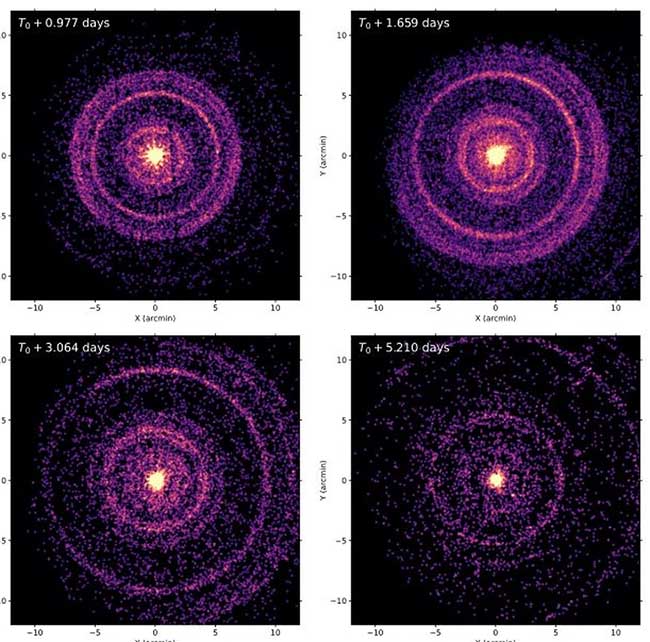Light from a newly formed black hole, located billions of light-years away, has struck Earth with tremendous force, shaking the upper atmosphere of our planet.
The gamma-ray burst GRA 221009A shattered records when it originated from a distance of 2.4 billion light-years and reached Earth in October 2022.

The GRA 221009A burst shines brightly, despite its billions of light-years distance from Earth. (Image: NASA/ESA).
Reports indicate that the explosion generated a light energy level of up to 18 tera-electronvolts, earning it the title of the brightest space explosion ever recorded.
In a recent study, scientists determined that the explosion from years ago was powerful enough to cause significant changes in the electric field of the ionosphere, at an altitude of about 500 kilometers.
“Based on satellite observations and new generation analytical models, we found that GRA 221009A had a profound impact on the conductivity of Earth’s ionosphere, causing strong disturbances not only in the lower ionosphere but also in the upper ionosphere (about 500 km above the ground),” said Mirko Piersanti, an astrophysicist involved in the project.
It is known that gamma radiation is the highest energy part of the electromagnetic spectrum, lying above X-ray radiation. Here, gamma-ray photons have energy levels one billion to one trillion times that of photons in the visible spectrum.
They are primarily emitted by high-energy events such as supernova explosions, but can also appear in events with lower energy levels, such as sunlight.

Light echoing from the gamma-ray burst travels through thick dust as it moves toward us, forming images of expanding concentric circles. (Image: Research Team).
This radiation is generally not a concern, as it is absorbed by Earth’s atmosphere before it can approach the surface.
However, in rare cases, scientists have recorded evidence showing that gamma rays and X-rays from unusually strong gamma-ray bursts interact with Earth’s ionosphere.
In the case of the gamma-ray burst GRA 221009A, although it lasted only about 7 minutes, the effects recorded in the ionosphere persisted for approximately 10 hours.
“The Sun is 150 million kilometers away from us. Meanwhile, the light from GRA 221009A traveled 22.7 trillion kilometers. This will help you realize the tremendous power of that explosion,” shared Mirko Piersanti.
Researchers indicated that the knowledge gained from this event could help us better understand and specify the impacts of distant explosions on Earth’s atmosphere.
Moreover, it also aids them in predicting what might happen if an explosion were to occur at close range.





















































